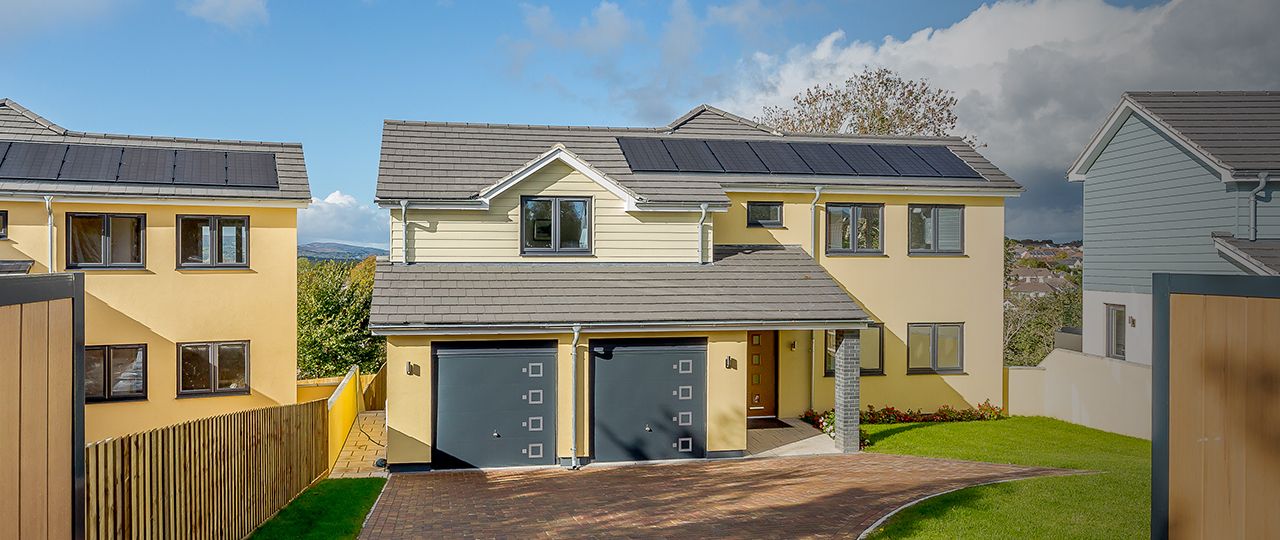
Moving into a new-build home may seem like an easy option for those who hate the thought of DIY. But before you sign a contract, make sure you’ve done your research.
New-build properties are often seen as a homeowner’s dream: sparkling new fixtures and fittings, guaranteed workmanship and energy efficiency.
Unfortunately, thousands of new homeowners every year discover that their dream home isn’t quite as worry-free and energy efficient as they’d assumed.
With pressure on housebuilders to deliver more homes in shorter timescales, the risk of cutting corners increases. If you’re planning to buy a new-build home, it’s worth being aware of the potential issues and your rights.
Getting on top of the snags
The process of dealing with issues once you move into a new home is called “snagging”. You may associate the term with minor issues – a bit of splashed paint, a missing window key – but there can be more serious issues. Leaking toilets, shoddy electrical work and structural defects are all considered “snags”.
As the homeowner, it’s up to you to report any issues to your builder. If you’re not confident inspecting your home yourself, it may be worth employing a professional. Snagging surveys can cost under a few hundred pounds, depending on the size of the property. And if the surveyor doesn’t find any significant issues, at least you have peace of mind that your home is safe and sound.
The energy performance gap in new homes
One of the advantages of buying a new-build home is that they have to meet high energy efficiency standards. It therefore comes as a surprise to many homeowners when their new home costs more to heat than they were expecting.
This may be down to defects with building work but is also a symptom of the energy performance gap – the discrepancy between the designed and as-built energy performance of a house. According to a report by the Zero Carbon Hub, this is a widespread issue across new-build properties. The factors leading to the performance gap are varied and complex, but the end result for homeowners is a house that costs more to heat than they’d anticipated.
There are numerous reasons why a house may not be as energy efficient as the developer claims. But the ‘rush to build’ that results in property defects can impact significantly on the energy performance of a home.
Construction workers may not understand the implications of what appear to be very minor variations from the original design. Rushed work and fewer quality control checks can result in gaps in insulation, cold air pockets and homes which aren’t as airtight as the developer may claim.
Thermal imaging cameras can show areas of heat loss in a building, but the best way to avoid ending up in a cold home is to have confidence in your builder.
How to avoid a new home nightmare
Here’s our checklist of things to consider when buying a new-build home.
When looking at a development:
- Check to see if the builder is registered with the Federation of Master Builders or a similar professional organisation
- If homes on the development are already occupied, you could knock on a few doors to ask what other people’s experiences have been like
Before you buy:
- New-build homes typically come with a structural warranty, for up to 10 years, provided by the likes of the National House Building Council (NHBC), Local Authority Building Control (LABC) or Premier Guarantee, amongst others. This will cover major defects but typically doesn’t cover fixtures, fittings and appliances. You may want to ask the developer if they provide an additional warranty to cover any issues that could arise.
- Make sure you’re clear on the developer’s “aftercare” process before you exchange contracts.
- You should be able to meet with the site manager as well as a salesperson – this is a great opportunity to ask questions of the actual builder.
- Consider getting a professional surveyor to carry out a snagging report.
For sale:
Leatfield, Kingsteignton, Devon. By Cornerstone Newton Abbot – LABC registered
Adams Court, Bideford, Devon. By MJ Saltmarsh Builders – NHBC registered
